

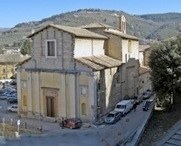
This was the site of an oratory that belonged to the Confraternita della Concezione, which housed a venerated image of known as the Madonna della Piaggia (see below). The image and the oratory were so-named , in popular parlance because they were on the lower slopes of the city.
The present church, which was built to provide a more fitting home for the image, passed to the Jesuits in 1621. The church was returned to the Confraternita della Concezione when the Jesuits were suppressed in 1773. It was de-consecrated in the 19th century but recently re-opened for worship.
Interior
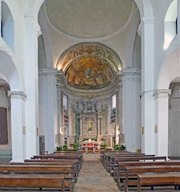
The church has a nave and two aisles. It also has a matrons’ gallery reminiscent of the much older one in Sant’ Eufemia.
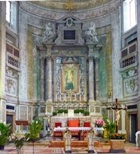
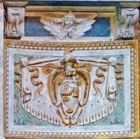
Madonna della Piaggia (15th century)
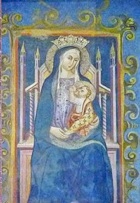
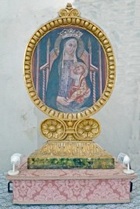
Madonna della Stella (1502)
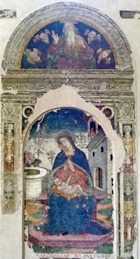
The main scene depicts the praying Madonna enthroned in a meadow, with the baby Jesus on her lap. She sits under a starry sky, with a well to her right. This is a reference to the fact that Bishop Bartolomeo Accoramboni was moved to found the hospice at Santa Maria della Stella in 1254, when a bright star shining on a well on the site led him to discover that it contained the bodies of abandoned babies.
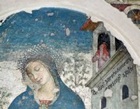
This scene is surrounded by a fictive frame, with God the Father in the lunette above.
Frescoes (1623-4)
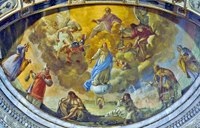
The Jesuits commissioned these frescoes in the apse from the Roman artist, Giovanni Serodine. They depict:
-
✴the Virgin of the Immaculate Conception, in the semi-dome; and
-
✴St Paul and King Solomon, to the sides.
This is the earliest documented work by Serodine, who went on to become an important follower of Caravaggio.

